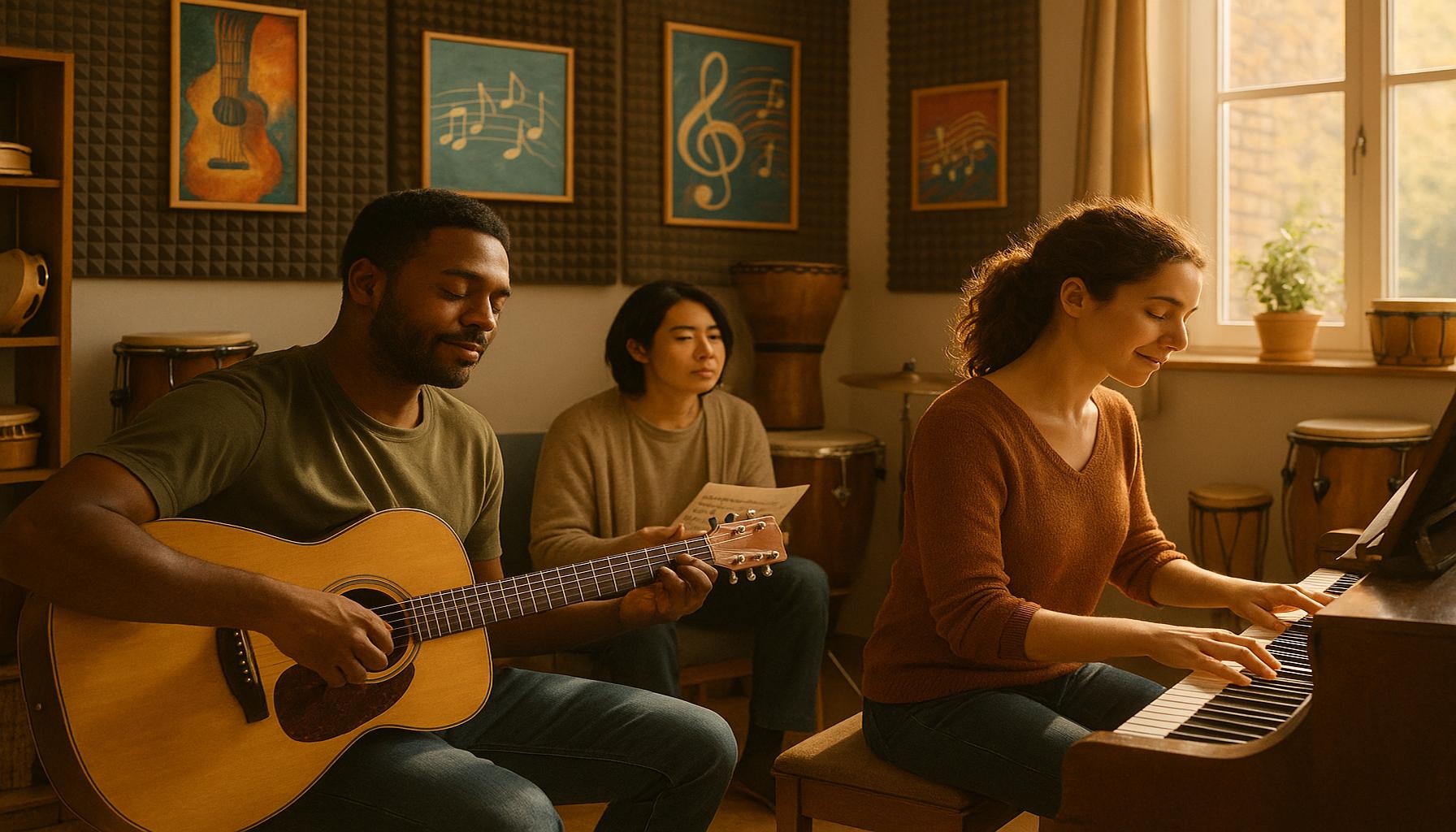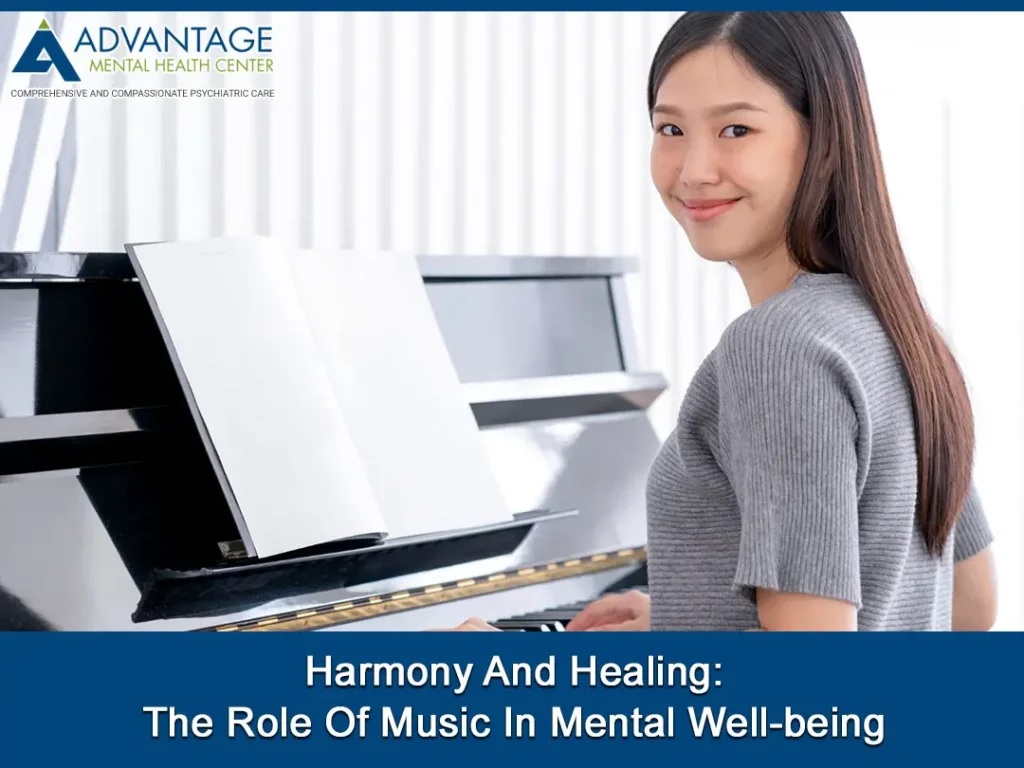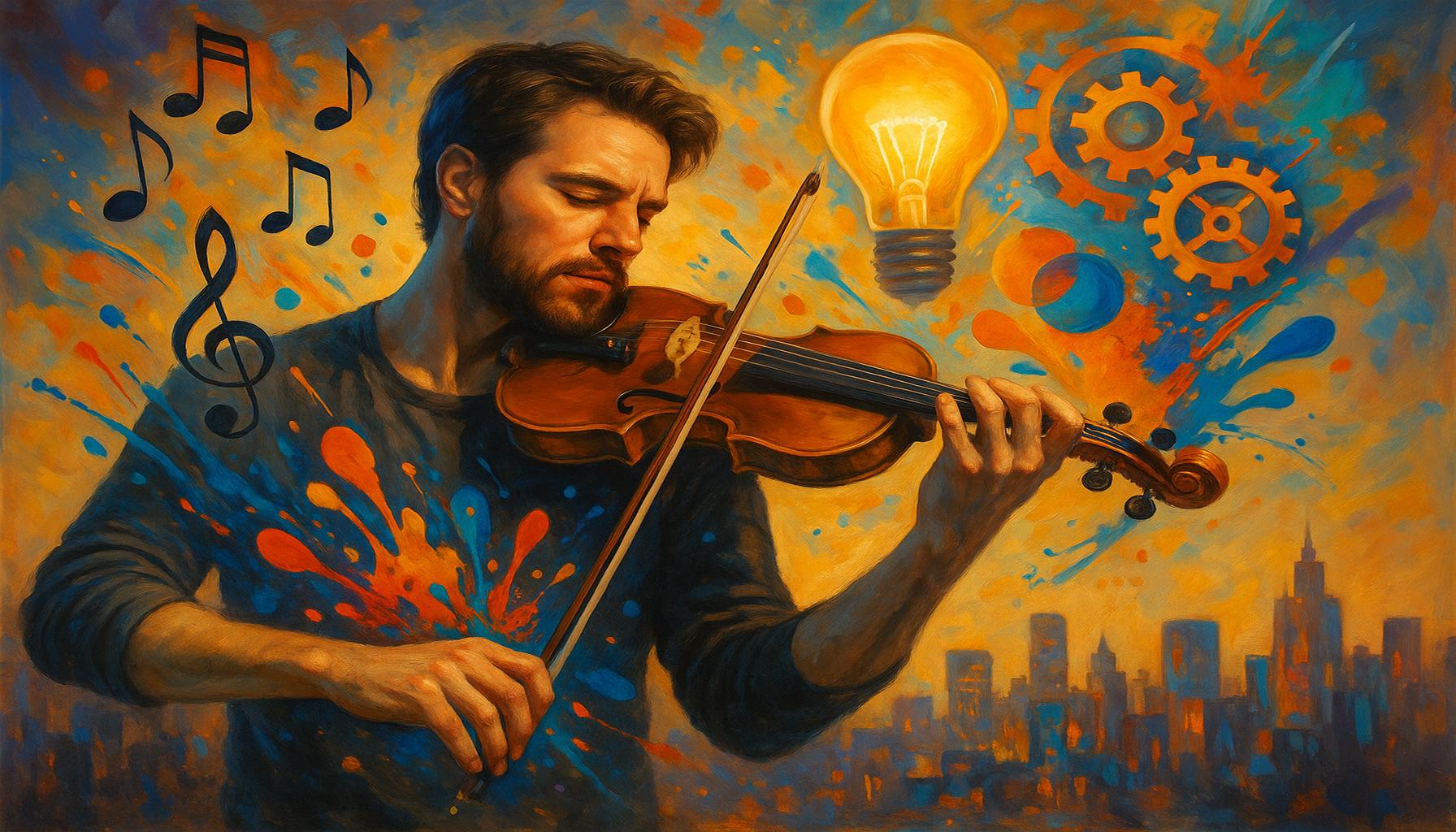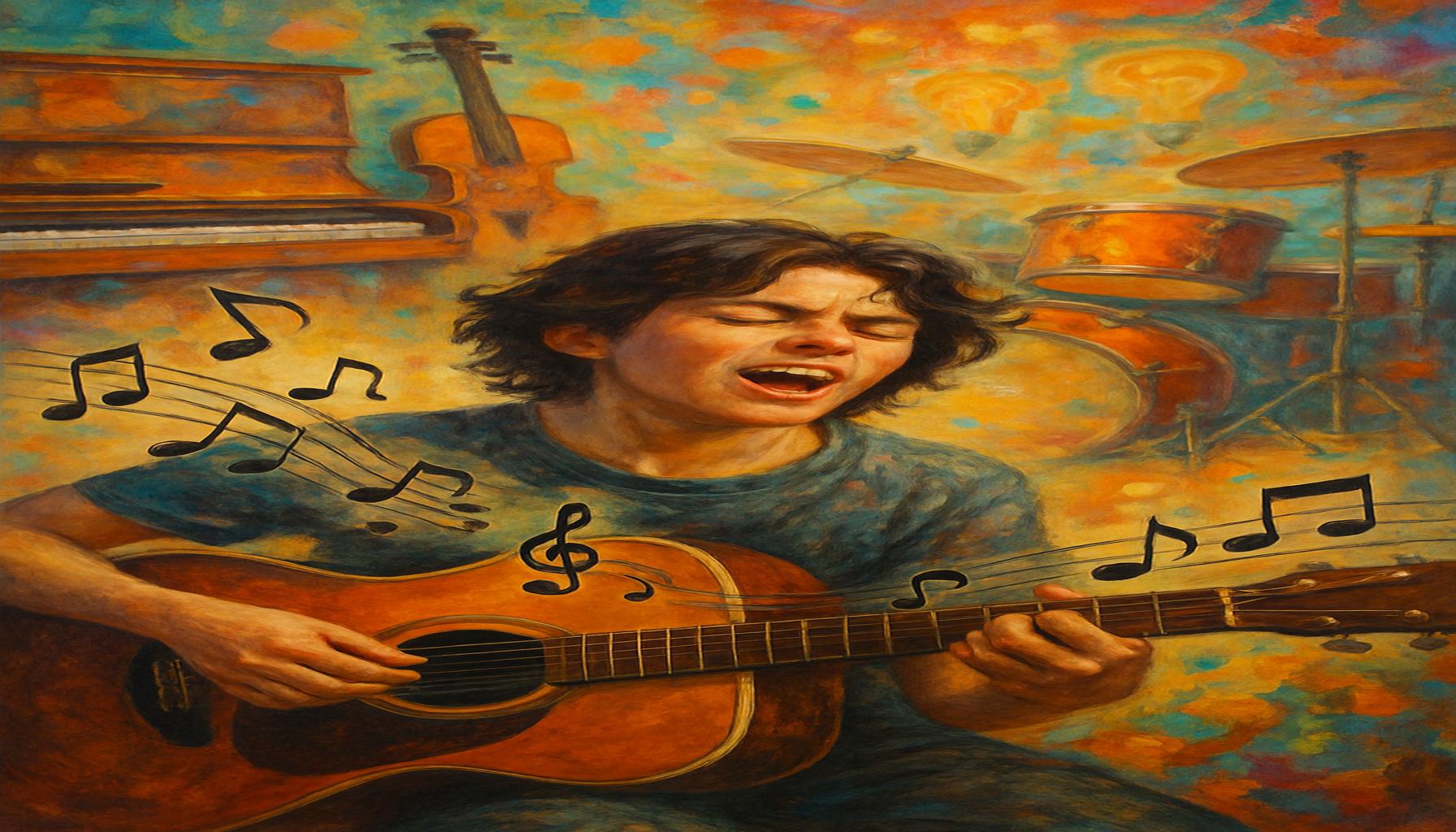Music as Therapy: Exploring the Psychological Benefits of Musical Creation

The Healing Potential of Music Therapy
In recent years, music therapy has gained recognition as a vital element in promoting mental well-being. This therapeutic approach transcends simple enjoyment; it taps into the core of human experience, revealing how engaging with music can lead to transformative psychological improvements. By exploring the intricate relationship between music and mental health, we can better understand why musical creation resonates so strongly with individuals across various backgrounds.
One of the standout benefits of music therapy is its ability to facilitate emotional expression. For many individuals, articulating emotions like grief, anxiety, or joy can be incredibly challenging. Music provides a universal language through which these feelings can be expressed and understood. For instance, a person grappling with loss may find solace in composing a heartfelt song or improvising melodies that mirror their emotional state. This act of creation not only offers an outlet for expression but also invites healing, as individuals reflect on their experiences through sound.
Stress relief is another significant benefit of engaging with music. Listening to soothing music, for example, has been shown to lower cortisol levels, the hormone associated with stress. A study published in the Journal of Music Therapy found that participants who engaged in music-making reported lower anxiety levels compared to those who listened to spoken word or silence. Activities such as playing an instrument or participating in group drumming can promote relaxation and create a sense of community, further enhancing emotional well-being.
Moreover, cognitive development is an area where music proves beneficial. Research indicates that learning to play an instrument can enhance brain function, improving skills such as problem-solving and critical thinking. Children who engage in musical education demonstrate better academic performance, particularly in subjects like mathematics and reading. This not only highlights the cognitive benefits of music education but also suggests that such engagement could foster a lifelong appreciation for the arts.
The Versatility of Music Therapy
The methods used in music therapy are extensive and adaptable, catering to diverse needs and preferences. Techniques such as improvisation, where participants create music spontaneously, or songwriting can empower individuals by allowing them to narrate their life stories through melodies and lyrics. Guided listening sessions, where therapists curate playlists that evoke specific emotions or memories, further expand the therapeutic landscape of music. These diverse approaches foster therapeutic relationships and create opportunities for healing across all age groups, from children grappling with emotional challenges to elderly individuals facing loneliness.

As we delve deeper into the layers of music therapy, it becomes increasingly evident that its potential to elevate mental health is boundless. The psychological benefits, coupled with the personalized nature of musical expression, make it a compelling avenue for those seeking healing and self-discovery. Whether through a community drum circle or a solitary session with a guitar, engaging with music opens a unique pathway to understanding oneself and fostering well-being.
Join us as we explore further the rich tapestry of music therapy, illuminating its powerful effects on mental health and inviting individuals to embrace music as a tool for personal growth.
DISCOVER MORE: Click here to learn about crafting sustainably
The Power of Musical Engagement
As we continue to investigate the profound effects of music as therapy, it becomes clear that the act of musical creation is central to providing psychological benefits. Engaging with music—whether through playing an instrument, singing, or composing—offers a unique opportunity for individuals to explore their identities and emotions in a way that verbal communication might not allow. This engagement fosters a sense of agency and accomplishment, essential components for enhancing overall mental health.
One significant aspect of musical creation is its ability to promote **self-discovery**. According to a study conducted by the American Music Therapy Association, engaging in music-making can lead to increased insights into one’s emotions and thought processes. When individuals create music, they often tap into subconscious feelings and ideas that may not surface otherwise. This newfound awareness can be pivotal in recognizing personal challenges and setting the stage for growth. The very act of writing lyrics or composing melodies can serve as a mirror, reflecting inner thoughts and feelings while creating a safe space for exploration.
Additionally, the component of **social connection** plays a pivotal role in the therapeutic aspect of music. Group music-making activities, such as choir singing and band performances, can foster a profound sense of belonging among participants. In a society where isolation and loneliness are prevalent, these communal experiences offer a counterbalance. According to the National Institute of Mental Health, social engagement is strongly correlated with improved mental health outcomes. By forming connections through shared musical experiences, individuals can combat feelings of isolation, thereby reducing symptoms of depression and anxiety.
To provide a clearer picture of the diverse benefits derived from music therapy, consider the following key areas:
- Emotional healing: Creating music can lead to emotional catharsis, allowing individuals to process feelings of pain and joy.
- Sensory stimulation: Engaging with rhythm, melody, and harmony can enhance sensory perception and cognitive functioning.
- Physical relaxation: Playing an instrument or participating in music-making has been linked to lower blood pressure and stress levels.
- Mindfulness and focus: Music creation requires concentration, helping individuals anchor their thoughts and promote calming mindfulness.
The evidence supporting the psychological benefits of musical creation underscores the importance of integrating music therapy into therapeutic practices. As therapy evolves, music emerges as not just a tool but a transformative medium offering healing. For many, the journey into music-making is not merely an artistic endeavor but a profound exploration of self and a gateway to recovery.
As we continue to unravel the clinical implications and societal roles of music therapy, we will discover how these art forms contribute intricately to holistic mental health and personal resilience. In the next section, we will delve deeper into specific case studies that illustrate the real-world applications of music therapy and the remarkable success stories that emerge from this fascinating field.
| Category | Details |
|---|---|
| Emotional Expression | Musical creation serves as a powerful outlet for emotional expression, allowing individuals to convey their feelings through melodies and lyrics. |
| Cognitive Benefits | Engaging in music enhances cognitive functions, improving memory and problem-solving skills by stimulating brain activity. |
| Social Connection | Participating in music fosters social connections, as performing or creating music often involves collaboration and shared experiences. |
| Stress Reduction | Musical activities have been shown to reduce stress and anxiety, promoting a sense of relaxation and peace. |
Another notable aspect of music as therapy is its ability to promote mindfulness. Engaging with music while focusing on the present moment can enhance self-awareness and enable personal insight. Additionally, the rhythmic aspect of music can facilitate physical release, allowing individuals to process and let go of pent-up emotions.Moreover, research indicates that musical engagement can help with depression and mood regulation. Whether through listening, performing, or composing, music encourages a shift in perspective, opening up new avenues for healing. The therapeutic effects of creating music are profound, transcending barriers of language and culture, ultimately uniting individuals in their shared experiences.Dive deeper into the world of musical creation and discover its transformative power on psychological well-being. The interplay between creativity and therapy opens up a realm of possibilities that many have yet to fully explore.
DISCOVER MORE: Click here to delve deeper
Mechanisms of Healing Through Music
Delving into the mechanisms that drive the therapeutic effects of music reveals a fascinating intersection of neuroscience and psychology. One key factor is the way that music can activate areas of the brain that are pivotal in emotional processing. Research has shown that listening to and creating music activates the limbic system, a crucial part of the brain responsible for emotions, memories, and arousal. By stimulating this part of the brain, musical creation can evoke strong emotional responses, enabling individuals to confront and express feelings that might otherwise remain unarticulated.
Moreover, neurochemical responses play a significant role in how music therapy contributes to psychological well-being. Engaging in musical creation releases neurotransmitters that are closely linked to feelings of happiness and relaxation. For instance, the production of dopamine—a neurotransmitter often associated with pleasure and reward—can be elevated during music-making activities. This surge in dopamine not only promotes a positive emotion but also helps reduce stress and anxiety levels, providing immediate psychological benefits during and after the engagement.
Mindfulness practices integrated with music therapy also contribute to psychological resilience. The process of creating music demands focused attention and can act as a form of meditation. Research published in the journal “Frontiers in Psychology” indicates that moments of musical engagement encourage mindfulness, which can lead to decreased rumination—a common symptom among individuals suffering from depression and anxiety. The rhythmic elements of music, combined with active participation, allow individuals to immerse themselves fully, enhancing their emotional regulation skills.
Inclusivity and Accessibility in music therapy are additional highlights that make it a vital resource across diverse populations. Programs tailored for people with disabilities or those experiencing severe mental health challenges have demonstrated remarkable success in fostering communication and emotional expression. For instance, community initiatives that provide accessible music-making spaces can empower individuals who may otherwise feel marginalized. In these environments, therapeutic music not only serves as a personal healing tool but also cultivates a sense of shared identity and understanding among participants.
Furthermore, the structured and often improvisational nature of musical creation is remarkable for its versatility. Techniques such as guided imagery combined with music therapy (GIM) allow individuals to unfold personal narratives through soundscapes. By facilitating a creative outlet that borders on the spiritual, music becomes a vehicle for transcending personal pain and grief. Participants report feelings of catharsis and profound emotional release, showcasing how music can provide not only an avenue for self-expression but also a platform for personal transformation.
Exploring these varied dimensions illustrates how the psychological benefits of musical creation span beyond mere enjoyment or artistic expression. They form a **multifaceted approach** to therapy that embraces emotional, cognitive, and social elements. With an ever-growing body of evidence supporting its efficacy, music therapy not only enriches individual lives but also stands as a powerful testament to the universal longing for connection and healing through art. As we advance our understanding, the ongoing research promises to uncover even more profound insights into how music shapes mental health and wellness across diverse populations.
DISCOVER MORE: Click here to uncover sustainable crafting tips
Conclusion
In conclusion, the exploration of music as therapy unveils a rich tapestry of psychological benefits that extend far beyond the realm of artistic expression. As we have seen, musical creation serves as a profound tool for emotional processing, capable of activating critical brain regions such as the limbic system, thus providing a pathway for individuals to confront and articulate their innermost feelings. The neurochemical responses associated with music-making, particularly the release of dopamine, not only engender feelings of joy and relaxation but also significantly mitigate stress and anxiety.
Furthermore, the integration of mindfulness practices within music therapy promotes emotional regulation and resilience, serving as a means of combating common psychological hurdles such as rumination and depression. The inclusivity of music therapy, tailored to meet the needs of diverse populations, bears testament to its effectiveness as a healing resource that encourages communication and fosters community.
As we continue to uncover the multifaceted approach of music therapy, it is crucial to recognize its potential to drive personal transformation and spiritual growth through creative expression. This not only highlights the inherent power of music in enhancing mental health but also calls for further research and implementation of therapeutic practices in various settings.
Ultimately, music as therapy offers a compelling narrative that underscores our universal desire for connection, healing, and the cathartic release of emotion. As we move forward, embracing this art form as a legitimate therapeutic modality will undoubtedly pave the way for innovative approaches to mental health and wellness, enriching lives and uplifting communities across the United States and beyond.


